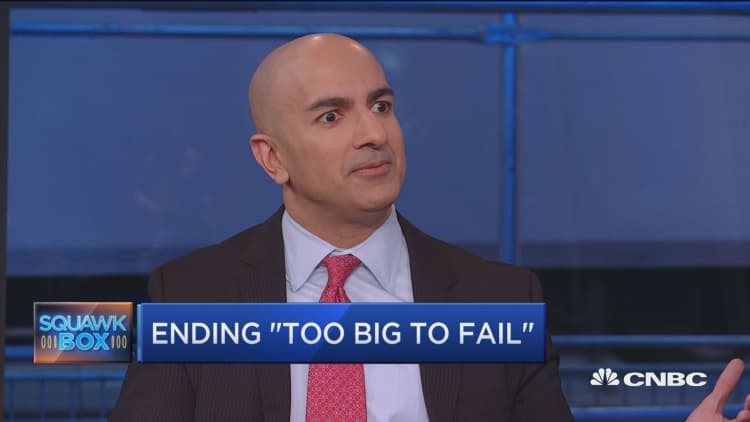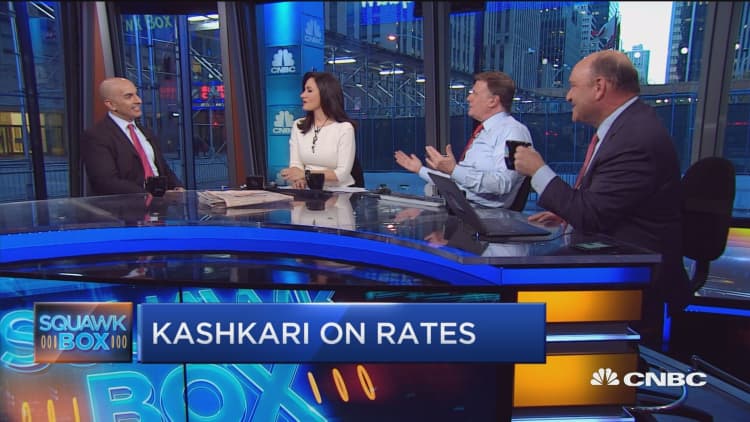
Tougher banking regulations put into effect since the Great Recession have lowered the chances of another financial crisis, but they odds are still much too high, Minneapolis Federal Reserve President Neel Kashkari told CNBC on Thursday.
Based on an analysis of data from the International Monetary Fund on past crises, Kashkari said on "Squawk Box" the odds of another bust over the next century are now 67 percent, down from 84 percent.
"I think if most Americans knew that they'd say that's ridiculous. That's much too high," he said.
Kashkari, who unsuccessfully ran as a Republican for governor of California in 2014, was the administrator of TARP, the Troubled Asset Relief Program, at the Treasury Department during the 2008 financial crisis.
After leaving Washington, Kashkari joined Pimco as a managing director and head of global equities. Before his time at treasury, he was a vice president at Goldman Sachs.
On Wednesday, Kashkari unveiled a plan aimed at preventing future government bailouts by forcing the largest U.S. banks to hold so much capital that they would probably decide to break up into smaller parts.
The set of regulations introduced since the crisis known as Dodd-Frank, did not go far enough, he added.
In February, in his first speech as head of the Minneapolis Fed, Kashkari took on the "too big to fail" issue, calling on lawmakers to take radical action to rein in banks and protect taxpayers.

On CNBC on Thursday, Kashkari also said the reaction in financial markets to Donald Trump's victory — rallies in stocks and bond yields — is making the job of central bankers easier by "boosting inflation expectations a little bit."
Fed policymakers have been waiting to see signs of increased inflation before they increase interest rates again.
The market widely expects the Fed to hike rates when it meets on Dec. 13-14. The cost of borrowing money was last increased in December 2015, the first such move in more than nine years.


